Table of Contents
Come join us now, and enjoy playing your beloved music and browse through great scores of every level and styles!
Can’t find the songbook you’re looking for? Please, email us at: sheetmusiclibrarypdf@gmail.com We’d like to help you!
Sorabji: In the Hothouse (from Two Piano Pieces) sheet music, Noten, partitura, spartiti 楽譜

Best Sheet Music download from our Library.

Please, subscribe to our Library.
If you are already a subscriber, please, check our NEW SCORES’ page every month for new sheet music. THANK YOU!
Browse in the Library:
Or browse in the categories menus & download the Library Catalog PDF:
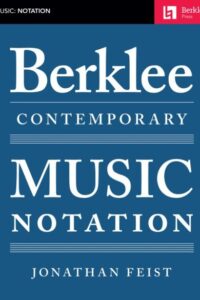
Who was Sorabji?
Kaikhosru Shapurji Sorabji: The Hermit of Modernist Maximalism
In the often-crowded pantheon of 20th-century composers, Kaikhosru Shapurji Sorabji (1892-1988) occupies a unique and enigmatic niche. A composer of staggering ambition, labyrinthine complexity, and self-imposed isolation, Sorabji crafted some of the most monumental, technically demanding, and stylistically idiosyncratic music ever conceived. His work, largely ignored during his lifetime and still challenging audiences today, represents a singular path through modernism – one defined by maximalism, intricate ornamentation, transcendental virtuosity, and a fierce, almost hermetic, independence.

Biography: A Self-Forged Identity
- Birth & Heritage: Born Leon Dudley Sorabji on August 14, 1892, in Chingford, Essex, England. His father was a Parsi engineer from India (thus the Persian-derived name Sorabji), and his mother was English-Spanish. This mixed heritage profoundly shaped his sense of identity, though he felt alienated from both cultures.
- The Name: Around 1914, he legally changed his name to Kaikhosru Shapurji Sorabji. “Kaikhosru” and “Shapurji” were Persian names chosen for their resonance and connection to ancient Persian history and Zoroastrianism, reflecting his deliberate construction of a unique persona.
- Musical Formation: Largely self-taught. He received some piano lessons in his youth but had no formal composition training. His musical education came through voracious listening, score study (especially Bach, Liszt, Busoni, Debussy, Ravel, Scriabin, Szymanowski, Medtner), and wide reading in literature, philosophy, and the occult.
- Early Career & Criticism: Worked as a music critic (under the pseudonym “S. Godfrey”) for outlets like The New Age and The New English Weekly from the 1910s to the 1930s. His critiques were famously acerbic, insightful, and often scathing, particularly targeting English musical provincialism and composers he deemed mediocre (which was most of them).
- The Recluse: Deeply disillusioned by the musical establishment and critical reception to his early performances (which were rare and often controversial), Sorabji gradually withdrew from public musical life starting in the late 1930s. After his mother’s death in 1940, he retreated almost completely to his secluded home “The Eye” in Corfe Castle, Dorset, where he lived with his companion, Reginald Norman Best, until his death. He forbade performances of his music for decades.
- The Ban Lifted: In 1976, pressured by a growing underground interest spearheaded by pianists like Yonty Solomon and Alistair Hinton (who later became his literary executor), Sorabji reluctantly lifted the ban on performances, provided he approved the performer.
- Death: Sorabji died on October 15, 1988, in Winfrith Newburgh, Dorset, leaving behind a colossal legacy of unpublished manuscripts.
Works: Monuments of Sound

Sorabji’s output is vast and overwhelmingly dominated by solo piano music, though he also composed orchestral works, chamber music, organ symphonies, and songs. His works are renowned for their extreme length, density, and technical difficulty, pushing the boundaries of playability.
- Key Masterpieces:
- Opus Clavicembalisticum (1930): His most famous (or infamous) work. A colossal 4+ hour piano epic in 12 movements (including fugues, passacaglias, toccatas, cadenzas), often considered one of the most challenging solo piano works ever written. A summit of contrapuntal complexity and virtuosic display.
- Symphonic Variations for Piano (1935-37): Another monumental work, exploring vast variation forms over an extended duration.
- Sequentia Cyclica super “Dies iræ” ex Missa pro Defunctis (1948-49): A massive cycle of 27 variations on the “Dies Irae” chant, demonstrating his intricate contrapuntal and transformative skills.
- 100 Transcendental Studies (1940-44): True to their name, these studies explore extreme technical and expressive demands far beyond those of Liszt or Chopin.
- Symphonies for Solo Piano: Several exist, including his Symphony No. 2 (“Jāmī”), blending orchestral textures and scope onto the piano.
- Gulistān – Nocturne for Piano (1940): A prime example of his lush, perfumed, and incredibly intricate “Persian”-inspired style.
- Concerti: He wrote several for solo piano and orchestra (e.g., Concerto per suonare da me solo e senza orchestra, per divertirsi), which are symphonic in scale and require superhuman virtuosity.
- Symphonies for Organ: Vast, complex works exploring the sonic possibilities of the instrument.
Analysis of Style: A Universe of Complexity
Sorabji’s style is instantly recognizable yet difficult to categorize. It synthesizes diverse elements into a unique and overwhelming whole:
- Maximalism: This is the defining characteristic. Sorabji embraced extremes:
- Length: Works lasting several hours are common.
- Density: Highly polyphonic textures, often with multiple independent melodic lines woven together in complex counterpoint (influenced by Bach, Busoni).
- Virtuosity: Demands transcendental technique – cascades of notes, complex polyrhythms, wide leaps, immense power, and extreme delicacy. He wrote as if the pianist had four hands.
- Ornamentation: Baroque-like ornamentation (trills, mordents, turns, grace notes) is ubiquitous, often layered and integral to the texture, creating shimmering, kaleidoscopic surfaces (influenced by Scriabin, Szymanowski, Middle Eastern/Persian music).
- Dynamic Range: From barely audible whispers to thunderous, percussive climaxes.
- Harmony: A complex fusion:
- Rooted in late-Romantic chromaticism (Scriabin, Szymanowski, early Schoenberg).
- Freely employed dissonance, clusters, and intricate chord structures.
- Often retained a sense of tonal centers or polarity, even amidst dense chromaticism (unlike strict atonality).
- Incorporated modal inflections, sometimes evoking Persian or Spanish flavors.
- Rhythm: Highly complex and fluid:
- Frequent use of polyrhythms (multiple simultaneous rhythms), cross-rhythms, and nested tuplets (triplets within quintuplets, etc.).
- Tempo often fluctuates wildly, requiring immense control.
- A sense of improvisatory freedom within highly structured forms.
- Form: Often large-scale, complex, and idiosyncratic:
- Favored variations (passacaglias, chaconnes), fugues, toccatas, and intricate multi-movement structures (like the Opus Clavicembalisticum).
- Forms were often expansive and cumulative, building through layered repetition and intensification rather than traditional development.
- Architecture was paramount, even in the densest textures.
- Influences (Assimilated, Not Imitated):
- Ferruccio Busoni: The most profound influence. Busoni’s ideas of “Young Classicism,” the transcendental potential of the piano, the fusion of Bachian counterpoint with modern harmony, and the concept of “Junge Klassizität” resonated deeply. Sorabji dedicated his Opus Clavicembalisticum to Busoni’s memory.
- Franz Liszt: Virtuosity, thematic transformation, large-scale forms, and the symphonic poem concept translated to piano.
- J.S. Bach: Contrapuntal mastery, structural rigor, and the use of forms like fugue and passacaglia.
- Alexander Scriabin: Mysticism, harmonic language, dense textures, and ecstatic climaxes.
- Karol Szymanowski: Sensuous harmony, intricate ornamentation (especially in the “Persian” inspired works like Métopes and Masques), and voluptuous textures.
- Debussy & Ravel: Color, texture, exoticism, and pianistic refinement.
- Mediterranean & Persian Cultures: While not authentically recreating these styles, he evoked their essence through ornamentation, melodic turns, and titles (Gulistān, Jāmī), reflecting his fascination with his Persian heritage and the wider Orient.
- Aesthetic: Sorabji’s music aimed for:
- Transcendence: Pushing beyond perceived limits of instrument, performer, and listener.
- Luxuriance & Opulence: A rich, sensual, almost decadent sound world.
- Intellectual Rigor: Underlying the sensual surface was meticulous structural planning.
- Individualism: A complete rejection of prevailing trends (serialism, neoclassicism, minimalism) in favor of his own uncompromising vision.
Legacy: From Obscurity to Cult Status
Sorabji’s legacy is complex and evolving:
- Decades of Neglect: His self-imposed exile and performance ban meant his music was virtually unknown outside a tiny circle for nearly 40 years. Manuscripts were inaccessible, unplayable, and unpublished.
- The Pioneers (1970s-): The lifting of the ban sparked interest. Pianists like Yonty Solomon, Michael Habermann, Geoffrey Douglas Madge (who made the first complete recording of Opus Clavicembalisticum in 1977), and later Marc-André Hamelin, Jonathan Powell, Fredrik Ullén, and Ronald Stevenson began the monumental task of learning, performing, and recording his works. This required immense dedication and technical prowess.
- Publication & Scholarship: The Sorabji Archive, established by Alistair Hinton (Sorabji’s literary executor), has been crucial in cataloging, editing, and facilitating the publication of scores (primarily by Dover Publications and The Sorabji Music Archive). Scholarly work is gradually increasing.
- Recordings Renaissance: The CD era and digital distribution (YouTube, streaming) have been transformative. Dedicated labels (Altarus, BIS, Toccata Classics, Piano Classics) have released numerous recordings, making this once-inaccessible music available globally. Complete cycles of the 100 Studies and other major works are underway.
- The Cult & The Challenge: Sorabji remains a “composer’s composer” and a cult figure. His music is not mainstream concert fare due to its extreme demands and duration. However, it commands deep respect and fascination among pianists, composers, and listeners drawn to its unique sound world and uncompromising vision. He is seen as the ultimate iconoclast, forging a path utterly independent of 20th-century musical fashions.
- Influence: His direct influence on other composers is hard to pinpoint due to his obscurity, but he stands as a powerful symbol of uncompromising artistic integrity and the exploration of extreme complexity and virtuosity. Composers interested in maximalism, intricate counterpoint, or pushing pianistic limits inevitably encounter his shadow.
- Copyright Controversy: The complex copyright status of his works (involving the Sorabji Archive and publishers) has sometimes been a point of friction within the community of performers and scholars seeking access.
Sorabji: The Solitary Giant
Kaikhosru Shapurji Sorabji was a true original. He inhabited a musical universe entirely of his own making, synthesizing diverse influences into a style characterized by unparalleled complexity, sensuous opulence, and transcendental ambition. His deliberate withdrawal from the world ensured decades of obscurity, but the dedication of pioneering performers and the power of recording technology have brought his extraordinary soundscapes to light. While his music remains challenging and demanding, it offers unparalleled rewards: a journey into a world of labyrinthine beauty, overwhelming power, and intellectual fascination. Sorabji stands as a testament to the power of an utterly individual artistic vision, uncompromising in its scope and ambition, a solitary giant whose monumental creations continue to challenge and inspire. He redefined the possible for the piano and left a legacy that continues to unfold as more performers dare to scale his musical Himalayas.
“In the Hothouse” is one of Sorabji’s most evocative and frequently performed works, serving as a perfect entry point into his dense, sensuous sound world. Here’s a detailed look at this fascinating piece:
Context: Two Piano Pieces (1918)
- Composed: 1918 (early in Sorabji’s career, age 26).
- Publication: First published in 1920, making it one of the earliest Sorabji works available in print.
- The Pair: “In the Hothouse” is paired with “Toccata” – a contrasting, hyper-virtuosic, and structurally complex piece showing his Busoni/Liszt influences. “In the Hothouse” offers the sensual, atmospheric counterpoint.
- Significance: Represents Sorabji’s early mastery of texture, harmony, and evocative atmosphere. It predates his gargantuan works but already displays his unique voice.
“In the Hothouse”: A Sensory Immersion
- Title & Imagery: The title instantly conjures an environment: humid, lush, teeming with exotic, overripe plant life, heavy perfumes, and stifling, enclosed heat. Sorabji translates this sensory overload into sound.
- Form & Structure: Relatively free and rhapsodic. It unfolds as a continuous, organic stream of consciousness rather than adhering to strict classical forms. Think of it as an elaborate, decadent arabesque.
- Style & Character:
- Extreme Sensuality: This is the defining feature. The music drips with lush, complex harmonies and suffocatingly rich textures.
- Harmony: Deeply chromatic, rooted in late Scriabin and early Szymanowski. Expect dense, constantly shifting chords: augmented harmonies, whole-tone inflections, unresolved dissonances creating tension, and sudden moments of surprising consonance like shafts of light piercing foliage. It avoids traditional tonality but gravitates around implied centers.
- Texture: Thick, layered, and constantly in motion. Tremolos, trills, rapid filigree (ornamental passages), and cascading arpeggios create a shimmering, humid haze. Melodies are often embedded within this dense undergrowth rather than standing clearly apart. The writing often requires the pianist to sustain multiple layers simultaneously.
- Rhythm: Fluid and flexible, often obscured by the sheer density of notes and ornamentation. Rubato (expressive tempo fluctuations) is essential. While less overtly complex polyrhythmically than his later works, the rhythmic flow feels organic and improvisatory.
- Dynamics & Articulation: Wide dynamic range, often shifting suddenly between extremes (e.g., thunderous climaxes collapsing into fragile whispers). Articulation varies from sharp staccatos to legatissimo passages that blur together. Pedaling is crucial for sustaining the harmonic haze and creating resonance.
- Ornamentation: Quintessential early Sorabji. Trills, mordents, turns, and grace notes are not mere decoration; they are the texture, creating constant flickering movement and contributing to the claustrophobic, teeming atmosphere. This foreshadows the intricate ornamentation dominating his mature style.
- Emotional Landscape: Evokes opulence, decadence, languor, mystery, stifling heat, hidden dangers, and overwhelming sensory stimulation. There’s a sense of beauty bordering on the grotesque due to its sheer intensity.
Influences Audible in “In the Hothouse”
- Scriabin (Primary): The harmonic language (mystic chords, unresolved dissonance, ecstatic climaxes), the sensual atmosphere, and the use of trills/tremolos are deeply indebted to Scriabin’s late sonatas and poems (e.g., Vers la flamme). Sorabji pushes Scriabin’s decadence further.
- Szymanowski: The opulent textures, perfumed harmonies, and “orientalist” exoticism (though abstracted here) strongly recall Szymanowski’s “Métopes” or “Masques,” which Sorabji admired deeply.
- Debussy: The focus on atmosphere, texture, and harmonic color (whole-tone scales, parallel chords) shows Debussy’s influence, though rendered with far greater density and intensity.
- Ravel: The virtuosic filigree and lush harmonies (think “Gaspard de la Nuit,” especially “Ondine” or “Le gibet”) are a touchstone, again amplified.
- Liszt: The rhapsodic freedom and dramatic gestures hint at Liszt, though filtered through a post-Scriabinesque lens.
Performance Challenges
- Texture & Balance: Maintaining clarity amidst the dense, rapidly shifting textures is paramount. The pianist must carefully voice chords and layers to prevent muddiness while sustaining the essential harmonic haze.
- Ornamentation as Texture: Executing the constant ornamentation smoothly and evenly, integrating it into the melodic and harmonic flow rather than treating it as mere decoration.
- Dynamic Control: Navigating the extreme dynamic contrasts and sudden shifts without sounding jarring. Creating a true pianissimo shimmer within complexity is incredibly difficult.
- Rubato & Phrasing: Applying expressive tempo fluctuations naturally while maintaining the overall structural coherence and forward momentum of the rhapsodic form.
- Pedaling: Using the pedal to create resonance and blend without causing harmonic blurring or loss of rhythmic definition. Requires exceptional sensitivity.
- Stamina & Focus: While shorter than his later works (typically 12-15 minutes), the piece demands intense concentration and physical control to sustain the atmosphere and navigate the technical intricacies.
Legacy & Significance of “In the Hothouse”
- Accessibility: It remains one of Sorabji’s most “accessible” works due to its evocative title, relatively shorter duration, and concentrated expression. It’s a frequent choice for pianists introducing audiences to Sorabji.
- Blueprint: It serves as a crucial blueprint for Sorabji’s mature style, showcasing his core preoccupations: sensuality, harmonic density, intricate ornamentation as texture, and atmospheric evocation, all present in embryonic form.
- Performance History: Despite Sorabji’s later ban, “In the Hothouse” (along with the Toccata) was one of the few pieces occasionally performed during his lifetime (e.g., by Sorabji himself and pianist Reginald Paul) and became a key work for the pioneering generation post-1976 (Yonty Solomon, Michael Habermann, Marc-André Hamelin, Jonathan Powell, Fredrik Ullén).
- Gateway Piece: It functions as a vital “gateway drug” into Sorabji’s world. Its success in conveying its intense atmosphere often encourages listeners to explore his more monumental, complex works.
- Standalone Masterpiece: Regardless of its role as an introduction, it stands as a perfectly formed and powerful piece of early modernist piano writing, a miniature tone poem of extraordinary evocative power.
“In the Hothouse” is a sun-drenched, overripe, and intoxicating immersion into Sorabji’s unique aesthetic. It captures the essence of his sensual maximalism in a concentrated dose, showcasing his debt to Scriabin and Szymanowski while asserting his own distinct voice. Its evocative power, technical brilliance, and relative brevity ensure its enduring place as one of his most beloved and frequently performed works, offering a compelling glimpse into the hothouse of Sorabji’s extraordinary musical imagination.
| Artist or Composer / Score name | Cover | List of Contents |
|---|---|---|
| Solfège des Enfants Op. 27 Ear Training Dictados Musicales Gehörbildung Solfejos by Alexis de Garaudé |
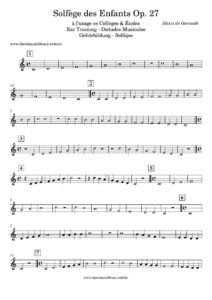 |
|
| Solfejos Op27 Alexis De Garaude (text in Portuguese) |
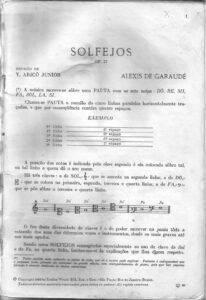 |
|
| Solitude – Chère Louise OST (Georges Delerue) | ||
| Solitude – Mort d’un pourri OST (Philippe Sarde) | ||
| Solitude (Musescore File).mscz | ||
| Someday My Prince Will Come (Yoko Kanno, arr.) Frank ChurchillJazz Piano Solo arr. sheet music |
 |
|
| Someone To Watch Over Me – Gershwin |
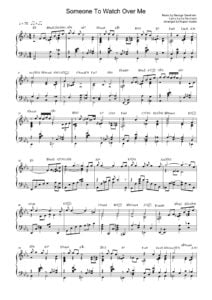 |
|
| Something Corporate – 21 & Invincible | ||
| Something Corporate – Down | ||
| Something Corporate – Hurricane | ||
| Something Corporate – She Paints Me Blue | ||
| Something George Harrison (Fragment) (Musescore File).mscz | ||
| Something In The Water Sheet Music Piano Vocal Guitar by Chris Destefano Carrie Underwood and Brett James |
 |
|
| Something Rotten (Musical) I Love the Way |
 |
|
| Something Rotten The Broadway Musical Vocal Selections By Karey And Wayne Kirkpatrick |
 |
Something Rotten The Broadway Musical Vocal Selections By Karey And Wayne Kirkpatrick |
| Something Rotten! Keyboard – Conductor Score Wayne Kirkpatrick And Karey Kirkpatrick |
 |
|
| Sometimes when it rains – Half A World Away (Secret Garden) | ||
| Somewhere In Time – John Barry (Musescore File).mscz | ||
| Somewhere In Time Theme John Barry |
 |
somewhere in time theme |
| Somewhere Over The Rainbow (piano vocal with lyrics in English and Français) |
 |
|
| Somewhere Over The Rainbow Israel Kamakawio ole.mscz | ||
| Sonata Album for the piano (26 favorite) Haydn, Mozart and Beethoven Book 1 & 2 | Sonata Album for the piano (26 favorite) Haydn, Mozart and Beethoven Book 1 & 2 | |
| Sonata de Elami – Padre Basilio (Guitarra) arr. Carles Trepat | Sonata de Elami – Padre Basilio (Guitarra) arr. Carles Trepat | |
| Sonata No. 15 Op 28 (Musescore File).mscz | ||
| Sonate No. 14 Moonlight 1st Mov. (Musescore File).mscz | ||
| Sondheim – A Little Night Music The Musical (Piano Vocal Score) |
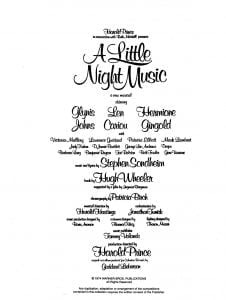 |
Sondheim – A Little Night Music (Vocal Score) |
| Sondheim All Sondheim Vol I Music and lyrics (Musicals) |
 |
All Sondheim Vol I Music and lyrics |
| Sondheim All Sondheim Vol II Music and lyrics (Musicals) |
 |
All Sondheim Vol II Music and lyrics |
| Sondheim All Sondheim Vol III Music and lyrics (Musicals) |
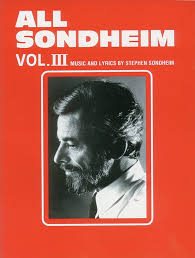 |
All Sondheim Vol III Music and lyrics |
| Sondheim All Sondheim Vol IV Music and lyrics (Musicals) |
 |
All Sondheim Vol IV Music and lyrics |
| Sondheim Company (the Musical) – Stephen Sondheim (Piano Vocal score) Alternate and licensed versions | MTI Licensed | |
| Sondheim For Piano Solo Phillip Keveren Series (Stephen Sondheim) (Musicals) |
 |
Sondheim For Piano Solo Phillip Keveren Series (Stephen Sondheim) |
| Sondheim Into The Woods Edition Songbook – Stephen Sondheim (Piano Vocal) (Musicals) |
 |
Into The Woods Edition Songbook – Stephen Sondheim (Piano Vocal) |
| Sondheim Into The Woods Vocal Selections From The Disney Movie |
 |
Sondheim Into The Woods Vocal Selections From The Disney Movie |
| Sondheim On Music Minor Details Major Decisions By Mark Eden Horowitz (Book) |
 |
|
| Sondheim On Sondheim The Musical Piano Vocal Score |
 |
Sondheim On Sondheim The Musical Piano Vocal Score |
| Sondheim Songs For Easy Piano 15 favorites (Musicals) |
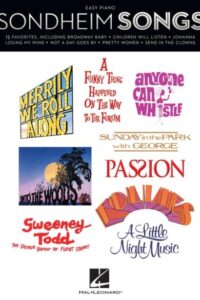 |
Sondheim Songs For Easy Piano 15 favorites |
| Sondheim The Almost Unknown Stephen Sondheim 39 Previously Unpublished Songs From 17 Shows And Films (Musicals) Piano Vocal |
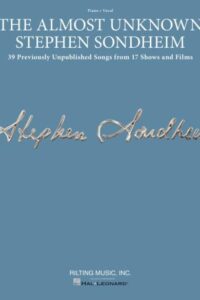 |
Sondheim The Almost Unknown Stephen Sondheim 39 Previously Unpublished Songs From 17 Shows And Films (Musicals) Piano Vocal |
| Sondheim, Stephen – Into The Woods A New Musical (Piano Vocal Score) |
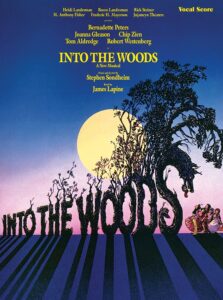 |
Sondheim, Stephen – Into The Woods A New Musical (Piano Vocal Score sheet music) |
| Sondheim, Stephen – Sunday from Sunday in the Park with George (Musicals) | Sondheim, Stephen – Sunday from Sunday in the Park with George | |
| Sondheim, Stephen Follies Piano Conductor Score Book by James Goldman (Musicals) |
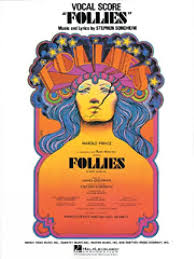 |
Stephem Sondheim Follies Piano Conductor Score |
| Song From A Secret Garden (by Rolf Lovland) | Song From A Secret Garden(by Rolf Lovland) | |
| Songbird (Eva Cassidy) | ||
| Songbook Piano 50 Popular Songs Really Easy Piano Collection Book |
 |
Songbook Piano 50 Popular Songs Really Easy Piano Collection Book |
| Songs From A Star Is Born The Greatest Showman La La Land And More Movie Musicals |
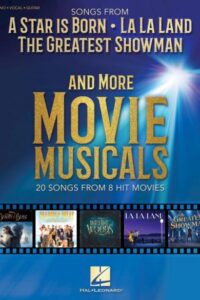 |
Songs From A Star Is Born The Greatest Showman La La Land And More Movie Musicals |
| Songs From Around The World Easy Sheet Music |
 |
|
| Songs Of The 80’s Songbook |
 |
Songs Of The 80s Songbook |
| Songs Of The 80s The Most Requested Songs Of The 80s Piano Vocal Guitar |
 |
Songs Of The 80s The Most Requested Songs Of The 80s Piano Vocal Guitar |
| Songs Of The 90s The Most Requested Songs Of The 90s Piano Vocal Guitar |
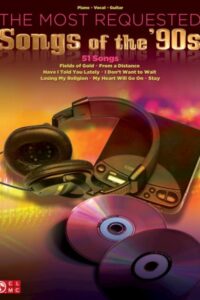 |
Songs Of The 90s The Most Requested Songs Of The 90s Piano Vocal Guitar |
| Songs Of The Eighties – More (The Decade Series) |
 |
Songs Of The Eighties – More (The Decade Series) |
| Songs The World Sings Piano Vocal Guitar |
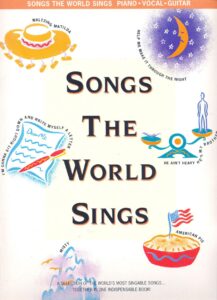 |
Songs The World Sings Piano Vocal Guitar |
| SONGS THE WORLD SINGS – Songbook |
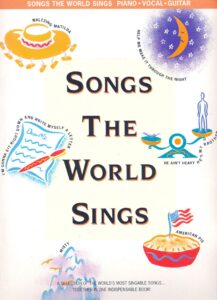 |
SONGS THE WORLD SINGS – Songbook |
| Songs With A Classical Touch 40 selections of piano solo |
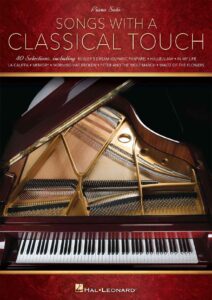 |
Songs With A Classical Touch 40 selections of piano solo |
| Songwriting And The Guitar Book The complete guide (eBook) |
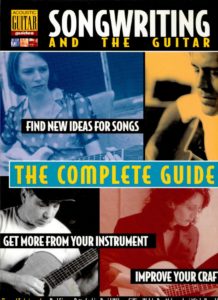 |
Songwriting And The Guitar Book The complete guide (eBook) |
| Songwriting For Dummies 2nd Ed. |
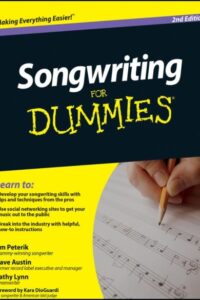 |
|
| Sonic – Angel Island_Easy |
 |
|
| Sonic Adventure – Lost World (Tricky Maze) |
 |
|
| Sonic Adventure – Theme of Tikal | Sonic Adventure – Theme of Tikal | |
| Sonic and the Secret Rings – Miss You | Sonic and the Secret Rings – Miss You | |
| Sonic CD – Sonic Boom_Easy |
 |
|
| Sonny Clark – Softly, As In A Morning Sunrise |
 |
|
| Sonny Clark Solos |
 |
Sonny Clark Solos |
| Sonny Rollin’s Moritat Mack The Knife (Solo) |
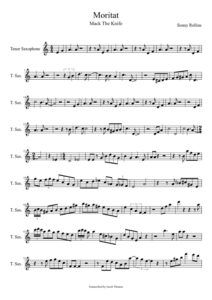 |
|
| Sonny Rollins – Airegin |
 |
|
| Sonny Rollins Improvised Saxophone Solos |
 |
Sonny Rollins Improvised Saxophone Solos |
| Sonny Rollins Jazz Masters Solo Transcription With Analysis (by Charlie Gerard) |
 |
Sonny Rollins |
| Sonny Rollins Moritat Saxophone Solo (Kurt Weill) (Musescore file).mscz | Musescore File | |
| Sonny Rollins Omnibook For C Instruments 2019 |
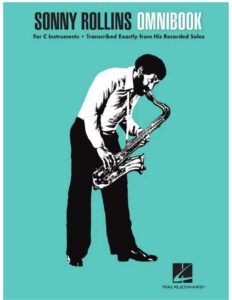 |
Sonny Rollins Omnibook For C Instruments 2019 |
| Sonny Rollins Open Sky Sonny Rollins And His World Of Improvisation |
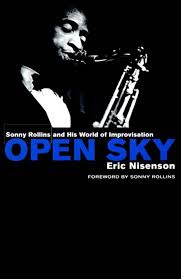 |
|
| Sonny Rollins Saxophone Colossus The Life And Music Of Sonny Rollins |
 |
|
| Sonny Rollins St Thomas Solo Transcription |
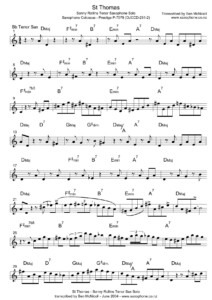 |
|
| Sonny Rollins Tunes Vol. 8 sheet music |
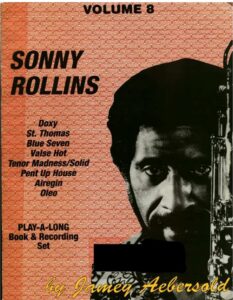 |
|
| Sonny Stitt Just Friends Eb transcription |
 |
|
| Sonny Stitt solo Transcriptions Book 2 (Charles McNeal) |
 |
Sonny Stitt solo Transcriptions Book 2 (Charles McNeal) |
| Sono come tu mi vuoi (Mina) | ||
| Sophie Hutchings – Grace |
 |
|
| Sophie Hutchings By Night sheet music | Sophie Hutchings By Night sheet music | |
| Sor Fernando – 24 Études Op. 35 (Guitarra) (Musescore File).mscz | ||
| Sor Complete Sor Studies for classical guitar compiled by David Grimes (Mel Bay) |
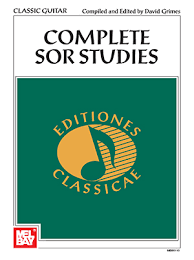 |
Sor Complete Sor Studies for classical guitar compiled by David Grimes (Mel Bay) |
| Sor Segovia Etudes With Tabs Classical Guitar With Tabs And Notation |
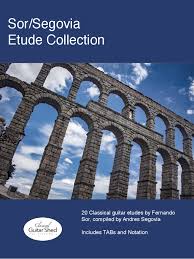 |
Sor Segovia Etudes With Tabs Classical Guitar With Tabs And Notation |
| Sor, Fernando Introduction À L’étude De La Guitare, Op.60 Tab |
 |
|
| Sorabji Pastiche On Chopin Op 64 1 |
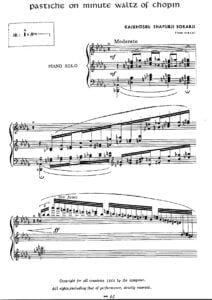 |
|
| Sorabji Piano Sonata No. 2 |
 |
|
| Sorabji – Désir Éperdu |
 |
|
| Sorabji – 4 Frammenti Aforistici |
 |
|
| Sorabji – Djami |
 |
|
| Sorabji – Etude 01 |
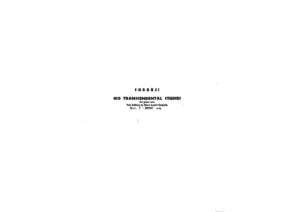 |
|
| Sorabji – Grieg La morte d’Ase Variazione maliziosa | Sorabji – Toccatinetta 1st page | |
| Sorabji – Toccatinetta |
 |
|
| Sorabji 2 Pieces (In the Hothouse + Toccata) |
 |
|
| Sorabji Fantasie Espagnole 1919 |
 |
|
| Sorabji Piano sonata no 1 |
 |
|
| Sorabji Salome |
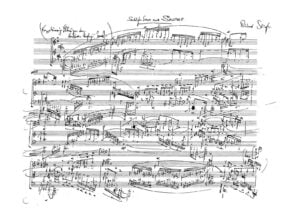 |
|
| Sorabji- Etude 17 |
 |
|
| Soren Bebe Adagio (piano solo) from Music for Ballet and Contemporary Classes |
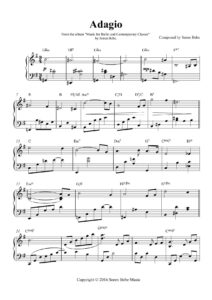 |
|
| Soren Bebe Plié 1 (piano solo) from Music for Ballet and Contemporary Classes |
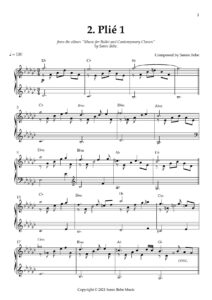 |
|
| Soren Bebe Warm Up from Ballet Vol 4 (Complete 27 tracks) | Soren Bebe Warm Up from Ballet Vol 4 | |
| Sorry seems to be the hardest word (Elton John) | ||
| Sostiene Pereira (4 mani) | ||
| Sostiene Pereira (Ennio Morricone) | ||
| SOUL – Classic Soul Music |
 |
SOUL |
| Soul (Disney Pixar Movie) Epiphany Easy Piano Vocal Guitar Chords Sheet Music |
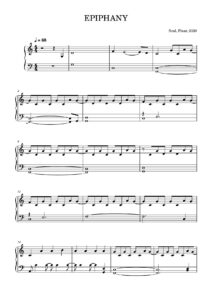 |
|
| Soul (Disney Pixar Movie) It’s All Right Piano Vocal Guitar Chords Sheet Music |
 |
|
| Soul (Disney Pixar Movie) Parting Ways Piano Vocal Guitar Chords Sheet Music |
 |
|
| Soul Blues Stride Swing Piano transcribed solos |
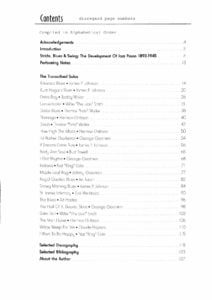 |
SOULD BLES STRIDE |
| Soul Food Songbook from the OST Piano Vocal Guitar |
 |
Soul Food Songbook from the OST Piano Vocal Guitar |
| Soul Guitar Bible (33 great songs) Guitar with TABs |
 |
Soul Guitar Bible (33 great songs) Guitar with TABs |
| Soul Hits Songbook 87 soul standards |
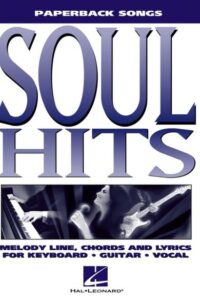 |
Soul Hits Songbook 87 soul standards Soul Hits Songbook 87 soul standards |
| Soul Jazz – Jazz Piano Solos Series Vol. 11 |
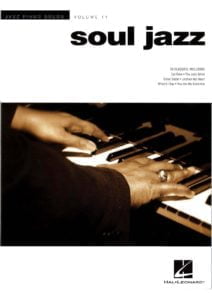 |
Soul Jazz |
| Sound Of Music – Sixteen Going On Seventeen | ||
| Sound Of Music – The Sound Of Music | ||
| Soundgarden Guitar Anthology |
 |
Soundgarden Guitar Anthology |
| Sous le Sable – shorter version (Philippe Rombi) | ||
| Sous le Sable (Philippe Rombi) | ||
| Sousa Horowitz Stars And Stripes Forever |
 |
|
| South Pacific Vocal Selections Revised Edition Music by Rodgers and Hammerstein II |
 |
South Pacific Vocal Selections Revised Edition Music by Rodgers and Hammerstein II |
| South Park – Bigger Longer Uncut Piano Vocal Guitar Music from the Movie |
 |
South Park – Bigger Longer Uncut Piano Vocal Guitar Music from the Movie |
| Southern Rock Guitar Bible with Tablature |
 |
Southern Rock Guitar Bible |
| Soweto Kinch – Never Ending |
 |
|
| Space Harrier Theme Sega Video Game Sheet Music Piano |
 |
|
| Spaces I Jazz ClassIcs |
 |
Spaces I Jazz ClassIcs |
| Spaces II Contemporary Funk Jazz |
 |
Spaces II Contemporary Funk Jazz |
| Spaces III Jazz Mixed Bag |
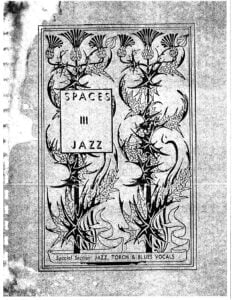 |
Spaces III Jazz Mixed Bag |
| Spaces IV CompendIum Of Jazz Tastes |
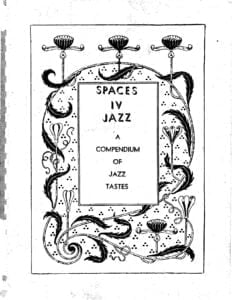 |
Spaces IV CompendIum Of Jazz Tastes |
| Spaces V Bebop Jazz |
 |
Spaces V Bebop Jazz |
| Spaces VI Jazz Solos |
 |
Spaces VI Jazz Solos |
| Spain (For Piano Solo) – Chick Corea (Musescore File).mscz | ||
| Spandau Ballet The Best Of Spandau Ballet Songbook |
 |
 |
| Spanish And Italian Folk Songs 1887 | Spanish And Italian Folk Songs 1887 | |
| Spanish Piano Music 24 Works |
 |
|
| Spartacus (Alex North – Khachaturian) love theme Bill Evans (Guitar with Tablature) | Spartacus Love theme | |
| Spartacus (Khachaturian) – Love Theme (Musescore File).mscz | ||
| Speed Guitar – German Schauss |
 |
Speed Guitar – German Schauss |
| Speed Mechanics For Lead Guitar with Tablature Book + MP3 Audio Play Along (embedded) b Troy Stetina |
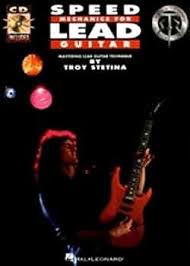 |
|
| Spencer Williams – Basin Street Blues Guitar Solo |
 |
|
| Spice Girls Greatest Hits |
 |
Spice Girls Greatest Hits |
| Spider-Man Costume Montage Danny Elfman |
 |
|
| Spider-Man Main theme Danny Elfman |
 |
|
| Spider-Man 2 Hans Zimmer You’re My Boy |
 |
|
| Spider-Man Into the Spider-Verse Sunflower by Austin Richard Post |
 |
|
| Spider-Man James Horner The Amazing Rooftop Kiss |
 |
|
| Spider-Man Theme From (Full Score) |
 |
|
| Spiderman – Costume Montage – Danny Elfman | ||
| Spiderman – Main theme – Danny Elfman |
 |
|
| Spiderman – Maintheme – Danny Elfman | ||
| Spiegel Im Spiegel (Violoncello And Piano) Arvo Pärt (Musescore File).mscz | ||
| Spirited Away – Joe Hisaishi |
 |
Hisaishi Spirited Away |
| Spring Awakening A New Musical Piano Vocal Selections by Duncan Sheik and Steven Sater |
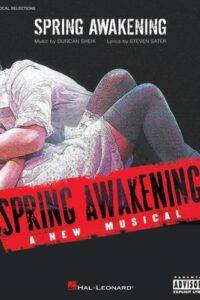 |
Spring Awakening A New Musical Vocal Selections |
| Spring is here (jazz lead sheet play along) | Spring is here | Audio MP3 included in Aebersold’s Vol. 34 |
| Spring Time Ballet – Bilitis OST (Francis Lai) |
